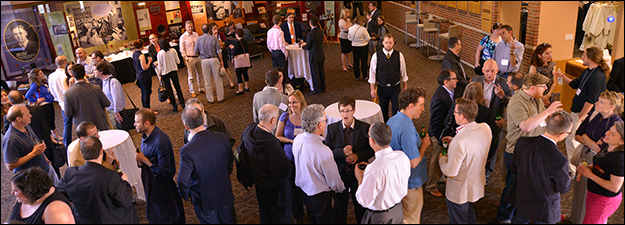Interiority and Topographies of Self from Late Antiquity to the Middle Ages
Sponsoring Organization(s)
Five College Medieval Studies Seminar
Organizer Name
Jason Moralee
Organizer Affiliation
Univ. of Massachusetts-Amherst
Presider Name
Sean Gilsdorf
Presider Affiliation
Harvard Univ.
Paper Title 1
Imagining the Body Divine: Augustine's Technology of Self
Presenter 1 Name
Mark Roblee
Presenter 1 Affiliation
Univ. of Massachusetts-Amherst
Paper Title 2
The Heroic Stranger to the Worldly: Late Antique Sources of Medieval Quest Interiority
Presenter 2 Name
Mary Maxine Browne
Presenter 2 Affiliation
Purdue Univ.
Paper Title 3
The Authorial "I" in Partonopeu de Blois and the Emerging Literary Subject
Presenter 3 Name
Melanie Hackney
Presenter 3 Affiliation
New York Univ.
Paper Title 4
Psyche, Text, and Selfhood: An Allegorical Reading of Chaucer's Tale of Melibee
Presenter 4 Name
Melissa Hudasko
Presenter 4 Affiliation
Univ. of Massachusetts-Amherst
Start Date
17-5-2015 8:30 AM
Session Location
Schneider 1140
Description
How can we locate and interpret the constituent elements of a premodern self, and what are the processes by which articulations of the self were asserted? Scholars of Late Antiquity and the Middle Ages have recently highlighted the importance of studying the interior worlds, emotions, and experiences of individuals and intellectual communities. While we once heard of an “age of anxiety” (E.R. Dodds), increasingly we hear of the “invention of the inner self” (Phillip Cary), “inwardness and selfhood” (Pauliina Remes), “varieties of selves” (Richard Sorabji), “consciousness and introspection” (Suzanne Stern-Gillet), the “corporeal imagination” (Patricia Cox Miller), and “inward turns” (Peter Brown, Kerem Eksen). This panel aims to assemble and place into dialogue interdisciplinary studies on the premodern self by inquiring into the constitution of selfhood, individual experience, identity, emotion, memory, and nostalgia. How are interior worlds represented in our sources? What is the relationship between self-reflection and physical and imaginary spaces? How do strategies of self-representation change over time and space? Most frustratingly, did non-elites have “selves” or did they take their selves for granted?
A focus on interiority invites exploration of the role of memory, mobility, and space on the constitution of self. A topography of self suggests that, like memory, assertions of the self could be embedded in the built environment through procession, pilgrimage, patronage, and inscription. This panel therefore invites studies of literary, documentary, and material culture that elucidate premodern interiors, anthropologies, or maps of the self.
Jason Moralee
Interiority and Topographies of Self from Late Antiquity to the Middle Ages
Schneider 1140
How can we locate and interpret the constituent elements of a premodern self, and what are the processes by which articulations of the self were asserted? Scholars of Late Antiquity and the Middle Ages have recently highlighted the importance of studying the interior worlds, emotions, and experiences of individuals and intellectual communities. While we once heard of an “age of anxiety” (E.R. Dodds), increasingly we hear of the “invention of the inner self” (Phillip Cary), “inwardness and selfhood” (Pauliina Remes), “varieties of selves” (Richard Sorabji), “consciousness and introspection” (Suzanne Stern-Gillet), the “corporeal imagination” (Patricia Cox Miller), and “inward turns” (Peter Brown, Kerem Eksen). This panel aims to assemble and place into dialogue interdisciplinary studies on the premodern self by inquiring into the constitution of selfhood, individual experience, identity, emotion, memory, and nostalgia. How are interior worlds represented in our sources? What is the relationship between self-reflection and physical and imaginary spaces? How do strategies of self-representation change over time and space? Most frustratingly, did non-elites have “selves” or did they take their selves for granted?
A focus on interiority invites exploration of the role of memory, mobility, and space on the constitution of self. A topography of self suggests that, like memory, assertions of the self could be embedded in the built environment through procession, pilgrimage, patronage, and inscription. This panel therefore invites studies of literary, documentary, and material culture that elucidate premodern interiors, anthropologies, or maps of the self.
Jason Moralee


